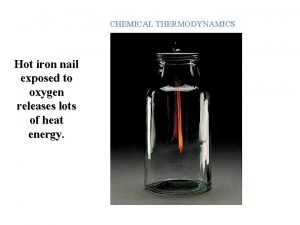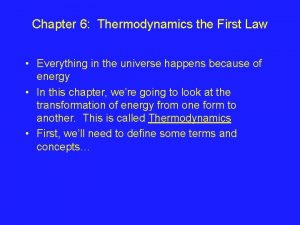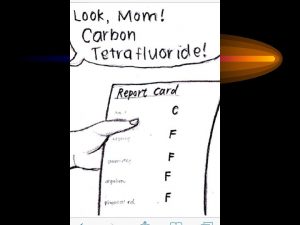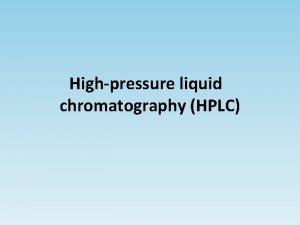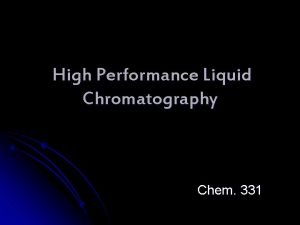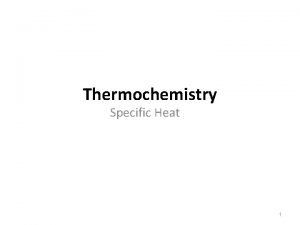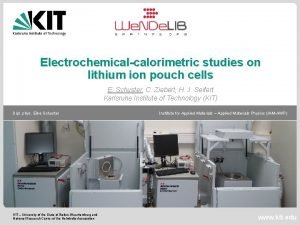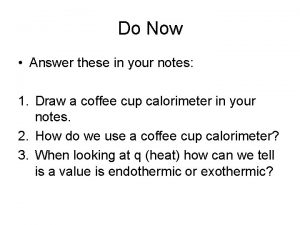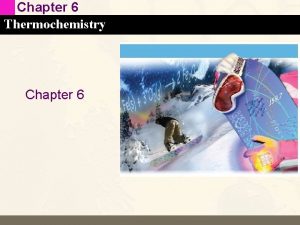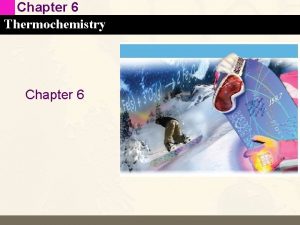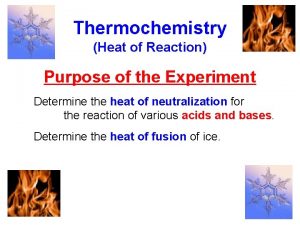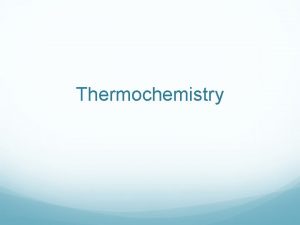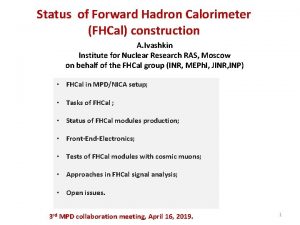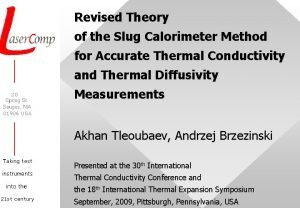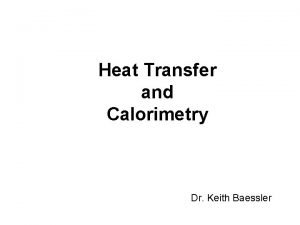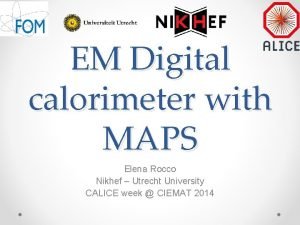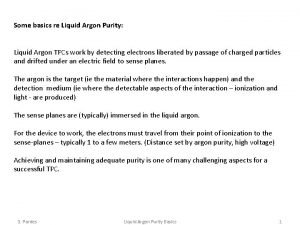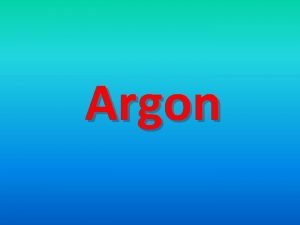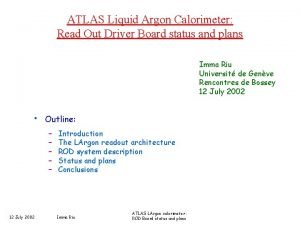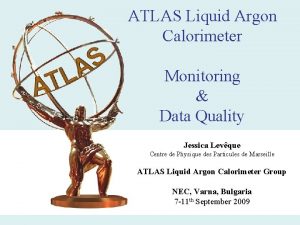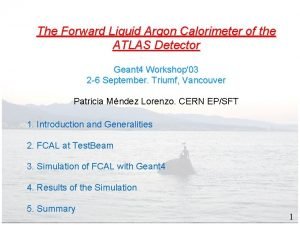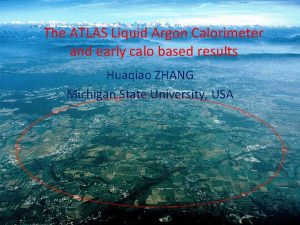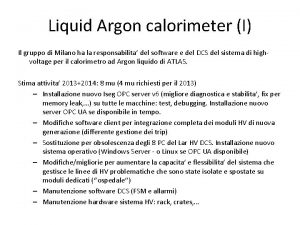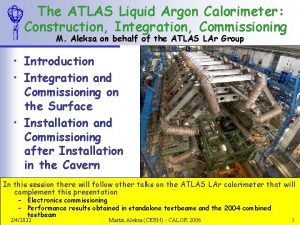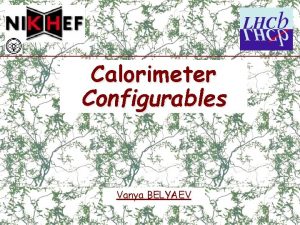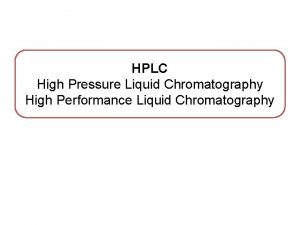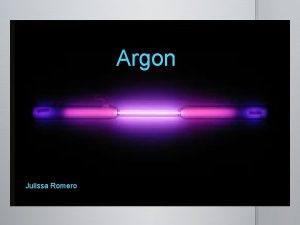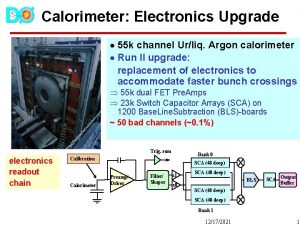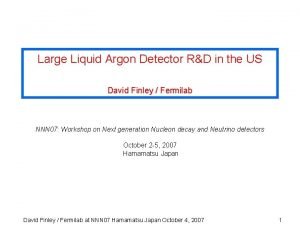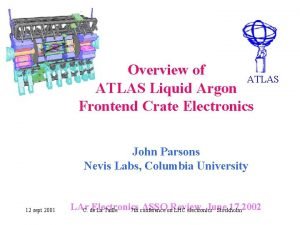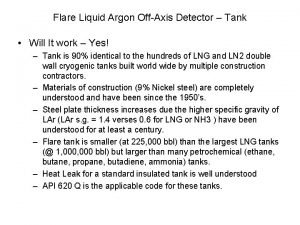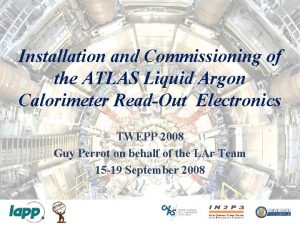Liquid Argon Calorimeter Performance at High Rates J


























- Slides: 26

Liquid Argon Calorimeter Performance at High Rates J. Rutherfoord with R. B. Walker University of Arizona 27 February 2014 V 1. 0

What limits the ATLAS Calorimeters? As the Luminosity at CERN’s Large Hadron Collider increases well beyond the design value of ℒ=1034 cm-2 s-1, what will limit the performance of the ATLAS liquid argon calorimeters? Here we report a small R&D project which investigates this question. We focus on the Forward Calorimeters where the rates are the highest. 27 February 2014 J. Rutherfoord 2

Liquid Argon Forward Calorimeter 15 mm Electrodes 1000 mm Forward Calorimeter 27 February 2014 ATLAS Liquid Argon Calorimeter J. Rutherfoord 3

Replicate HL-LHC conditions in the lab For details on data-taking see B. Toggerson, A. Newcomer, J. R. , and R. B. Walker, NIMA 608 (2009) 238 27 February 2014 Hot 90 Sr -source deposited on outer surface of the foil. KE 2. 28 Me. V J. Rutherfoord 4

External wiring 27 February 2014 J. Rutherfoord 5

Scale of the problem At the HL-LHC Sampling Calorimeter ℒ at = 5 1034 cm-2 s-1 at | |~4. 7, ~1 gamma/cm 2/crossing on face of FCal and at EM shower max ionization rate is ~3 1011 /mm 3/s or ~7500 /mm 3/crossing EM FCal Module ~15 Te. V/crossing deposited in each FCal Particles from min-bias collisions IP 27 February 2014 5 m J. Rutherfoord Worst location Beam Line 6

Space-charge effects in LAr gaps Cathode Anode Our measured observable is the current. Simplifications allow an analytic solution. See J. R. , NIMA 482 (2002) 156 r is ionization rate relative to critical value. As we raise the ionization rate, charge builds up in the gap and distorts the electric field. Field is screened near the anode. Anode on the left, cathode on the right, E-field to the right. 27 February 2014 z is distance across the liquid argon gap J. Rutherfoord 7

The most dramatic effect … When we reach the critical ionization rate the density of electrons near the anode rises by three orders of magnitude. 27 February 2014 J. Rutherfoord 8

Three 90 Sr Name Strong Weak Control beta source activities Specified Received 50 m. Ci 2 m. Ci 0 m. Ci 72 m. Ci 3. 4 m. Ci 0 m. Ci and it decays away with half-life of 29 yrs 27 February 2014 J. Rutherfoord 9

Raw data 260 V Strong source. 60 V Each dot is a reading. 1. 9 V Two readings per second. Current 27 February 2014 40 readings at potential. J. Rutherfoord 10

0. 268 mm gap Gap Current (n. A) Operating potential of 260 V Gap Potential (V) 27 February 2014 J. Rutherfoord 11

0. 268 mm gap Gap Current (n. A) Operating potential of 260 V Gap Potential (V) 27 February 2014 J. Rutherfoord 12

Gap Current (n. A) Close-up of low potential region Gap Potential (V) 27 February 2014 J. Rutherfoord 13

~330 fb-1 equivalent running at worst location in ATLAS Forward Calorimeter 0. 268 mm gap 27 February 2014 J. Rutherfoord 14

Unpredictable currents 27 February 2014 J. Rutherfoord 15

Strategy Ideally we would vary the ionization rate and measure the current But we have only two 90 Sr sources (nominally 50 m. Ci and 2 m. Ci) So we vary the critical ionization rate by varying the potential across the gap 27 February 2014 J. Rutherfoord 16

A 3/4 A 27 February 2014 J. Rutherfoord 17

Ratio of Strong Source to Weak Source Currents 27 February 2014 Three different gaps Gap Potential (V) J. Rutherfoord 18

Observations We have determined the threshold for entering the space-charge regime There are unpredictable effects in the space-charge regime This R&D project does not tell us how the performance of the calorimeters is degraded. A separate R&D effort, the Hi. Lum project at IHEP/Protvino, should answer this. 27 February 2014 J. Rutherfoord 19

Conclusions Performance of Liquid Argon calorimeters degrades with ℒ but not with ℒ dt LAr calorimeter is stable at 0. 1% level for 330 fb-1 of running In the space-charge regime the currents are somewhat unpredictable The on-set of space-charge effects is wellmeasured and is determined by + = 0. 08± 0. 02 mm 2/Vs 27 February 2014 J. Rutherfoord 20

Backup Slides

At a high ℒ hadron collider … calorimeter showers produced by copious min-bias events … n n flood the liquid argon gaps with ionization This ionization is … w approximately spatially uniform on the scale of the gap (~ 2 mm) w approximately uniform in time on the scale of the time it takes for charges to drift across the gap 27 February 2014 J. Rutherfoord 22

Ionization in a liquid argon gap Typical drift velocities e = 4. 3 106 mm/s Ar+ = 1 102 mm/s at E = 1000 V/mm We consider the case where the rate of ionization is constant. This produces a DC current through the HV supply. 27 February 2014 J. Rutherfoord 23

Critical ionization rate Assume Ar+ ion drift velocity is proportional to Electric field is key to space-charge effects The critical ionization rate is defined in terms of this mobility Finally define relative ionization rate If 27 February 2014 , then we are in the space-charge limited regime J. Rutherfoord 24

Value of + (Ar+ mobility in LAr) Measurements of + reported in the literature vary by about a factor 50 from lowest to highest: 0. 02 + 1. 0 mm 2/Vs Most recent and best-looking technique – Norman Gee et al. , J. Appl. Phys. 57 (1985) 1097, reading off a plot, gives 0. 15 + 0. 18 mm 2/Vs 3% Our preliminary result 27 February 2014 Temp dependence + = 0. 08 0. 02 mm 2/Vs J. Rutherfoord 25

Critical values for the on-set of space-charge effects Charges on the surface of the electrode plates establish the electric field in the LAr gap. Define critical charge density in the LAr as that which, integrated over the gap, equals the absolute sum of the charges on the plates Assume Ar+ ion drift velocity is proportional to Electric field is key to space-charge effects 27 February 2014 J. Rutherfoord 26
 Calorimeter problems
Calorimeter problems Coffee cup calorimeter formula
Coffee cup calorimeter formula Coffee cup calorimeter vs bomb calorimeter
Coffee cup calorimeter vs bomb calorimeter Duhhhhh
Duhhhhh Unit rate
Unit rate Ratio guided notes
Ratio guided notes Ratios rates and unit rates
Ratios rates and unit rates Ratios rates and unit rates
Ratios rates and unit rates Uses of high performance liquid chromatography
Uses of high performance liquid chromatography Liquid chromatography definition
Liquid chromatography definition High performance liquid chromatography hplc machine
High performance liquid chromatography hplc machine Liquids dielectrics are mainly used as
Liquids dielectrics are mainly used as Liquid liquid extraction unit
Liquid liquid extraction unit Financial risk definition
Financial risk definition Specific heat equation units
Specific heat equation units Constant volume calorimeter
Constant volume calorimeter Mifflin formula
Mifflin formula Accelerating rate calorimeter
Accelerating rate calorimeter Coffee cup calorimeter
Coffee cup calorimeter Constant volume calorimeter
Constant volume calorimeter Coffee cup calorimeter equation
Coffee cup calorimeter equation Bomb calorimeter uses
Bomb calorimeter uses Bomb calorimeter
Bomb calorimeter Hadron calorimeter
Hadron calorimeter Slug calorimeter
Slug calorimeter Keith baessler
Keith baessler Digital calorimeter
Digital calorimeter

